Retouching a headshot and editing a photo are key processes in creating visually appealing images. Whether for professional profiles, portfolios, or corporate branding, a well-retouched headshot photograph can make a significant impact on both professional and personal levels.
Similarly, photo editing is indispensable across various photography genres, whether it’s scenic shots or fashion shots. But, one might think both are the same and wonder, “Is Headshot Retouching the Same as Photo Editing?”
Unfortunately, no. Headshot retouching is a specialized branch of photo editing focused on enhancing portrait photographs. It targets facial features, skin tone, and background adjustments.
In contrast, general photo editing allows for a broader range of adjustments across different types of images. Throughout the following sections, we explore the distinctions and techniques behind these two practices in more detail.
The Basic Functions of Headshot Retouching and Photo Editing
Headshot retouching improves an individual’s portrait by focusing on facial details and skin textures. A professional photo retoucher service provider precisely adjusts lighting and removes blemishes to present the best version of the subject. This process is essential for creating compelling and professional images in various industries.
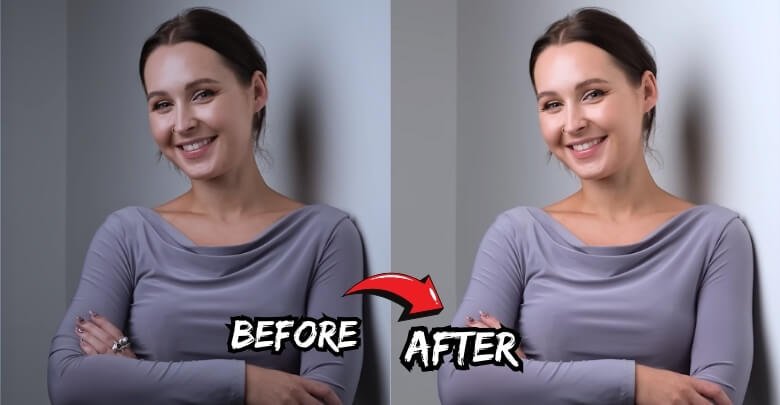
In contrast, photo editing consists of a wide range of techniques applicable to numerous types of photography. From adjusting colors and contrasts to cropping and straightening, these edits apply to landscapes, events, and more. Such versatility makes it a fundamental skill for photographers and designers alike.
Anyone who wishes to excel in the visual arts must know both headshot retouching and general photo editing. By mastering these skills, professionals can ensure their work is both appealing and appropriate for their intended audience.
Is Headshot Retouching the Same as Photo Editing?
No, headshot retouching and photo editing are not the same. Headshot retouching is a specialized area of photo editing that focuses specifically on portraits. It refines a person’s appearance by fine-tuning facial features, and adjusting skin tones, and often involves modifying the background to keep the focus on the subject.
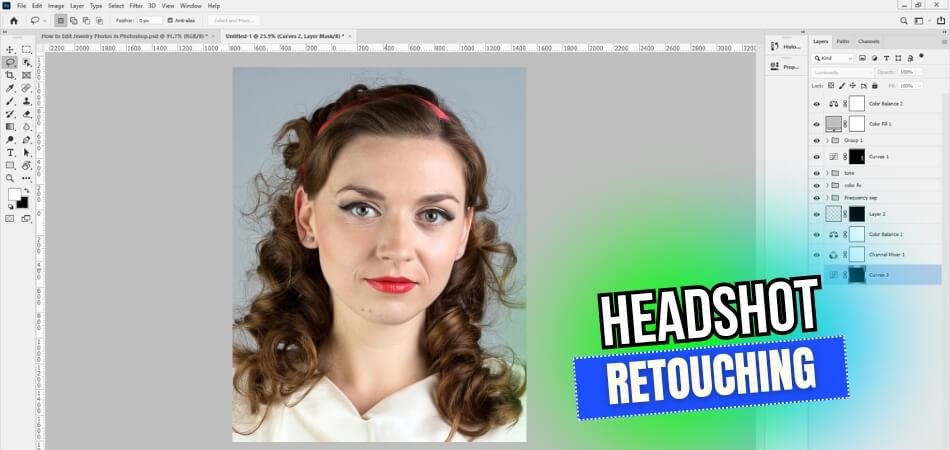
Photo editing, on the other hand, is a broader practice that includes a wide range of techniques applicable to various types of photographs. This can include color correction, cropping, resizing, and adding effects to increase the overall aesthetic of any image. Photo editors work with all kinds of photographs, from landscapes and cityscapes to wildlife and abstract art.
Here’s a table outlining some key differences between headshot retouching and general photo editing:
| Aspect | Headshot Retouching | Photo Editing |
| Focus | Makes for better individual portraits. | Applies to all kinds of photographic images. |
| Main Objectives | Improves facial features, and skin tone. | Contributes to the overall image quality and appeal. |
| Common Techniques | Treatments include spot removal, teeth whitening, and eye betterment. | Color correction, cropping, resizing. |
| Targeted Outcome | Professional, polished personal images. | Artistic or realistic development of photos. |
| Specialized Tools | Specific tools for skin smoothing, and feature augmentation. | A broad set of tools for a variety of image types. |
| End Use | Often used for professional profiles, actors, and models. | Wide-ranging, from print media to digital formats. |
| Detail Orientation | High focus on minute details like hair, and makeup. | May not require as deep a focus on fine details. |
Having a solid knowledge of these differences helps you select the best editing method for your photography project. Knowing these distinctions can greatly impact the final result, whether you’re editing a professional headshot or a scenic landscape.
When to Pick Headshot Retouching Over Photo Editing?
The type of image retouching you choose depends on your needs and the impact you want to achieve. Headshot retouching focuses on improving personal portraits, whereas general photo editing offers broad improvements. Knowing when to opt for headshot retouching can significantly affect your photos’ outcome.
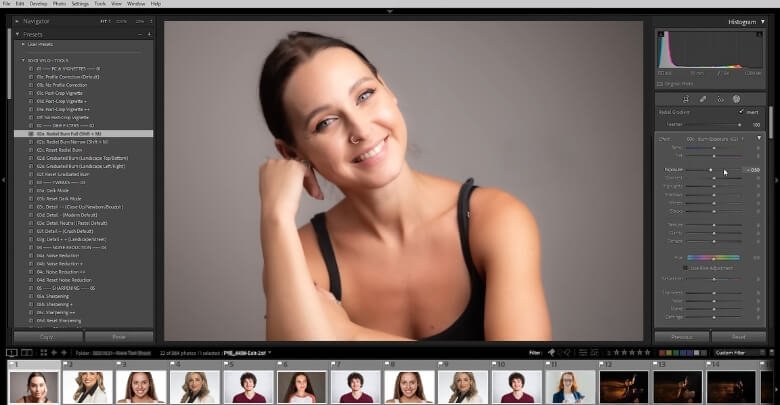
Professional Profiles and Resumes
Creating a strong first impression is crucial for job applications. So the headshot needs to look professional. A professionally retouched headshot ensures your profile stands out among other regular profiles. Employers appreciate a clean, polished image that reflects professionalism. This detail can make a significant difference in competitive fields.
Acting and Modeling Portfolios
Actors and models need headshots. Agencies and casting directors look for high-quality images that highlight their features clearly. Retouching in this context increases attractiveness and ensures authenticity. It’s about presenting the best version of oneself.
Corporate Branding and Marketing
Companies often require executive headshots that align with the corporate brand. Retouched photos convey professionalism and cohesion across company materials. These images are used in annual reports, websites, and promotional content. A well-retouched headshot can significantly help a company’s image and branding efforts.
Social Media Presence
Social media presence is crucial in the digital age. A retouched headshot can capture the right tone and personality for your profile. It’s especially relevant for consultants, speakers, and influencers. A polished image attracts more engagement and opportunities.
Publications and Press Releases
When featured in a publication or press release, a high-quality headshot is essential. It ensures that the photo fits well with the publication’s aesthetic standards. Retouched images can also help control how the public perceives you. This control is crucial for maintaining a professional public image.
Each of these scenarios illustrates the importance of choosing headshot retouching to ensure your photographs look professional but also serve their intended purpose effectively.
Common Techniques Used in Headshot Retouching and Photo Editing
The techniques used in headshot retouching and general photo editing refine images, but they do so in a different way. Being aware of these methods helps in applying the right touch to various types of images. Here are some common practices in each discipline:
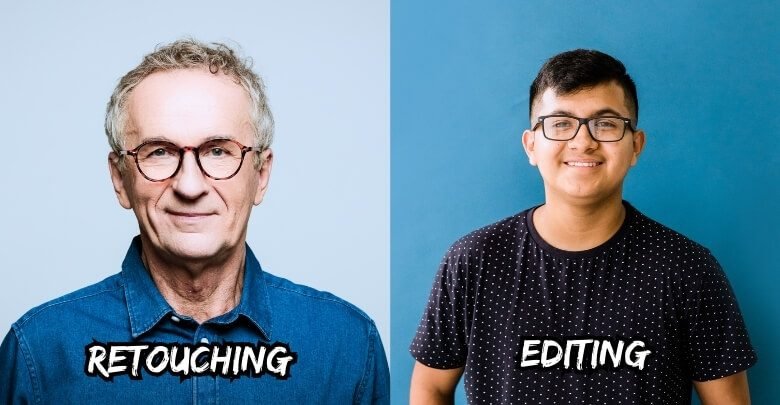
Skin Retouching
Imperfections like blemishes and wrinkles are softened or removed. Skin tone can be evened out for a natural look. Techniques include healing brushes and clone stamping. This results in a smoother, cleaner facial appearance.
Eye Enhancement
Eyes are brightened to make portraits more engaging. Red-eye effects are corrected, and the whites of the eyes are often lightened. Sharpening is applied to the eyes to draw attention to them and stand out. These adjustments make the subject’s eyes a focal point.
Teeth Whitening
Yellow or stained teeth are brightened in headshot retouching. This is crucial for a vibrant, appealing smile. The process involves selective color adjustments. It adds to the headshot’s professional appearance.
Background Alteration
Background distractions are minimized or replaced. This helps focus attention solely on the subject. Simple backgrounds add to the professional appeal. Techniques include cropping and digital backdrops.
Color Correction
This is essential in both headshot retouching and general photo editing. It ensures the colors reflect the original scene accurately. Adjustments are made to saturation, contrast, and brightness. Color correction helps maintain consistency across images.
These techniques are fundamental to creating visually appealing and effective photographs, whether they’re detailed portraits or broader scenic edits. By mastering these methods, photographers can significantly boost their work’s quality and impact.
Essential Tips for Mastering These Common Techniques
The art of photo editing and headshot retouching can significantly improve your images. Making photographs with these techniques requires a delicate balance between subtlety and skill. Here are some essential tips for effectively applying these common techniques:
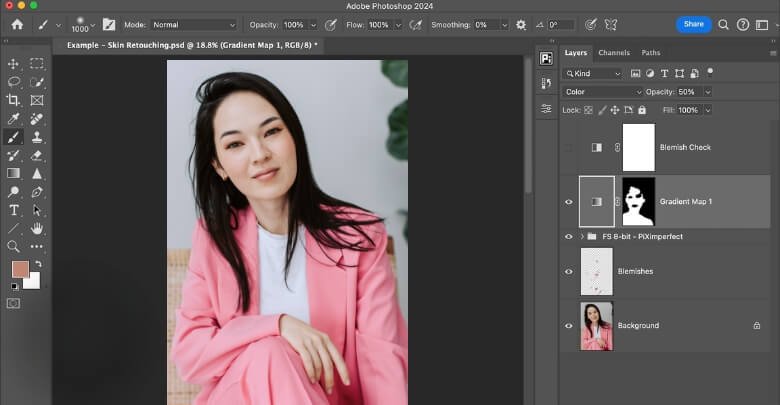
- Practice Skin Retouching Gently: Avoid over-smoothing skin which can make photos look unrealistic. Use tools like the healing brush sparingly to preserve natural skin textures.
- Enhance Eyes Thoughtfully: Eyes should be bright but natural, so avoid excessive whitening. Sharpening should be subtle to amplify focus without harsh lines.
- Be Moderate with Teeth Whitening: Teeth should be whitened to remove obvious stains but keep shading for dimension. This prevents teeth from appearing unnaturally bright.
- Choose Backgrounds Wisely: Backgrounds should complement, not compete with, your photo’s subject. Use neutral colors that raise the subject’s features without distraction.
- Apply Color Correction Consistently: Maintain consistent lighting and color tones across all your images. This creates a professional and cohesive portfolio.
- Learn Advanced Cropping Techniques: Cropping can dramatically alter a photo’s impact. Keep the rule of thirds in mind when creating your artwork so that you maintain the right balance and composition.
By implementing these tips, you’ll improve your photo editing skills and ensure that your final images appear professional and polished. Remember, the key is to increase the photo without altering the essence of the subject.
Frequently Asked Questions About is Headshot Retouching the Same as Photo Editing?
Discover answers to common queries regarding the distinctions between headshot retouching and general photo editing. Understand the unique aspects and techniques involved in each process. This FAQ section provides clarity for professionals and enthusiasts alike.
What is the Professional Term for Photo Editing?
The professional term for photo editing is often referred to as post-processing or image retouching. It involves refining, enhancing, or altering images to achieve desired results.
Do Photographers Retouch Photos?
Yes, many photographers retouch photos as part of their workflow to better the final image’s quality. This can include adjusting lighting, colors, composition, and retouching subjects’ appearance.
How Long Does It Take to Edit Headshots?
The time it takes to edit headshots can vary depending on factors such as the complexity of the edits needed, the number of images, and the photographer’s skill level. On average, basic retouching for a single headshot can take anywhere from 15 minutes to an hour, while more extensive retouching may require several hours per image.
What Aspects of a Headshot Are Typically Retouched?
Headshot retouching typically involves enhancing skin texture, evening out skin tone, removing blemishes, reducing wrinkles, whitening teeth, brightening eyes, and refining facial features while maintaining a natural appearance.
Are There Different Levels of Headshot Retouching?
Yes, there are different levels of headshot retouching ranging from basic adjustments to more advanced retouching techniques. The level of retouching applied often depends on the client’s preferences and the intended use of the headshot.
Can Headshot Retouching Be Overdone?
Yes, excessive retouching can result in an unnatural or unrealistic appearance, which may detract from the overall quality of the image. It’s important to strike a balance between enhancing the subject’s appearance and maintaining a natural look.
Do Professionals Recommend DIY Headshot Retouching?
While basic retouching techniques can be learned and applied by individuals, professionals often recommend seeking the expertise of experienced retouchers for more polished and professional results, especially for high-quality headshots.
Conclusion
The retouching of headshots and the general editing of photographs are indispensable tools in photography, but each serves a specific purpose in its own right. Their applications and techniques differ significantly, even though both have better image quality.
The question “Is headshot retouching the same as photo editing?” forms the basis of our exploration, and there is no positive response. Headshot retouching specializes in personal portraits, focusing on detailed enhancements like skin, eyes, and background for professional results.
Being aware of the specific uses of each method can greatly improve your photographic work. Knowing when and how to apply these techniques ensures that each photo is visually appealing and perfectly suited to its intended context.